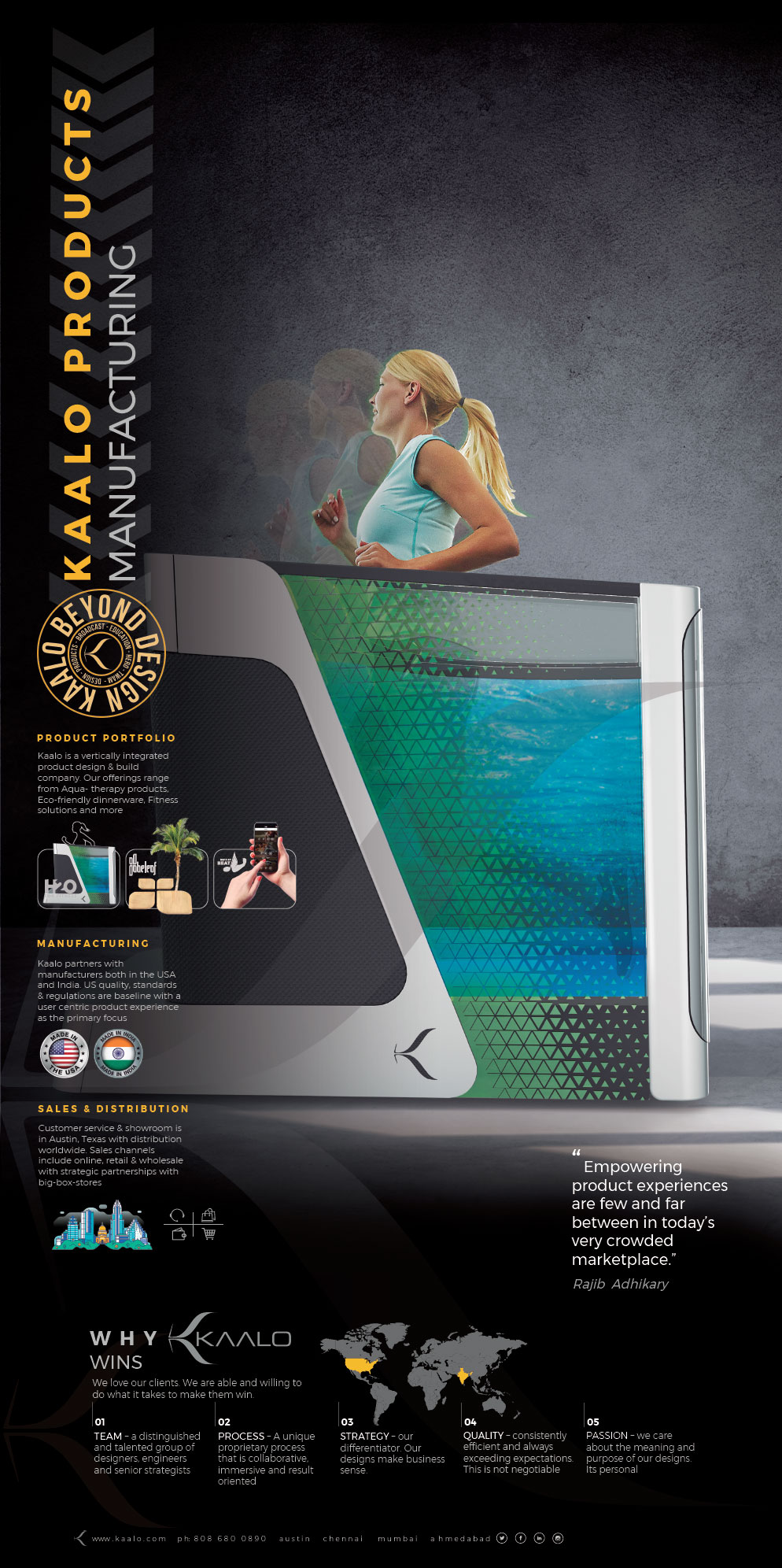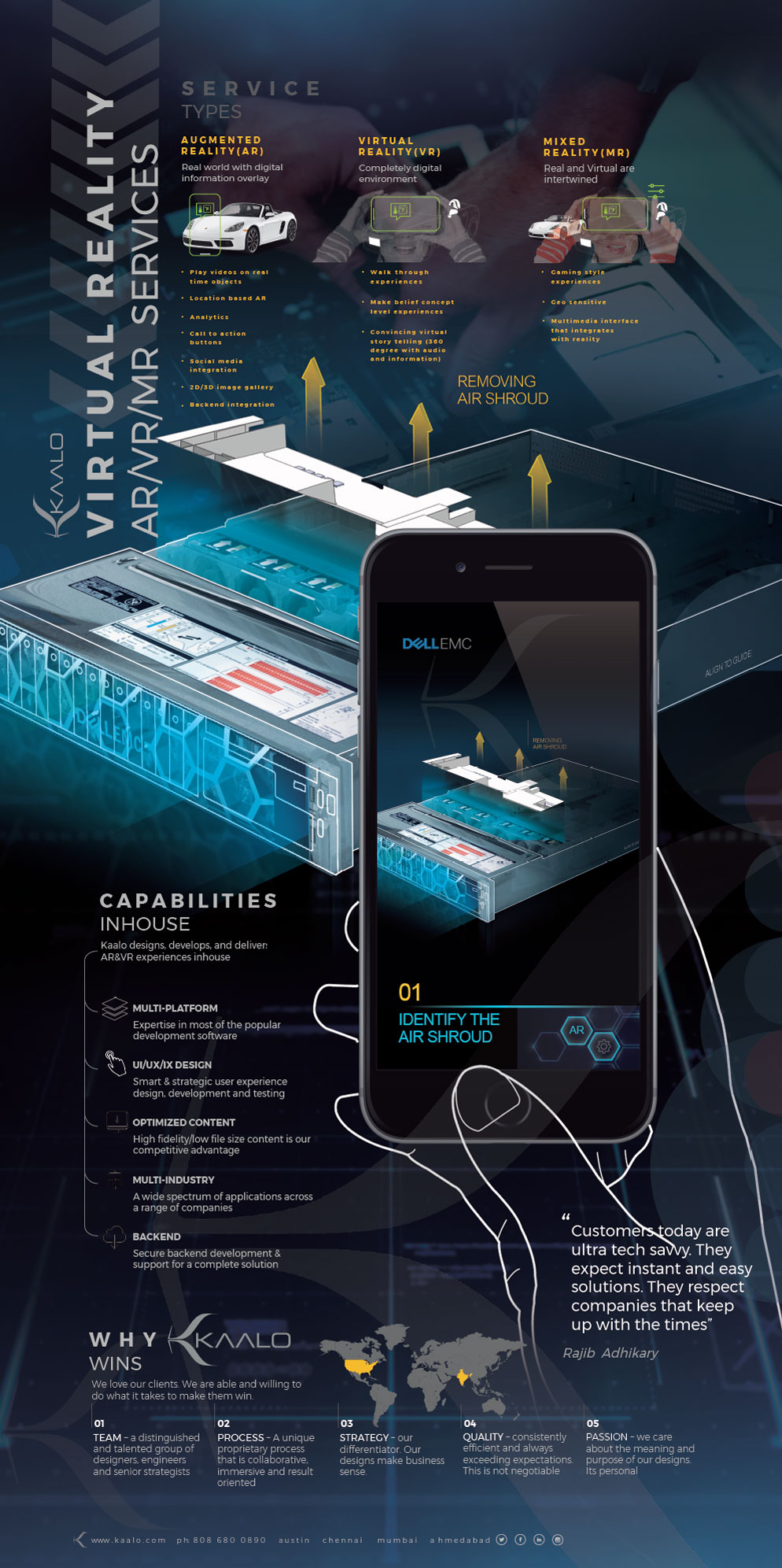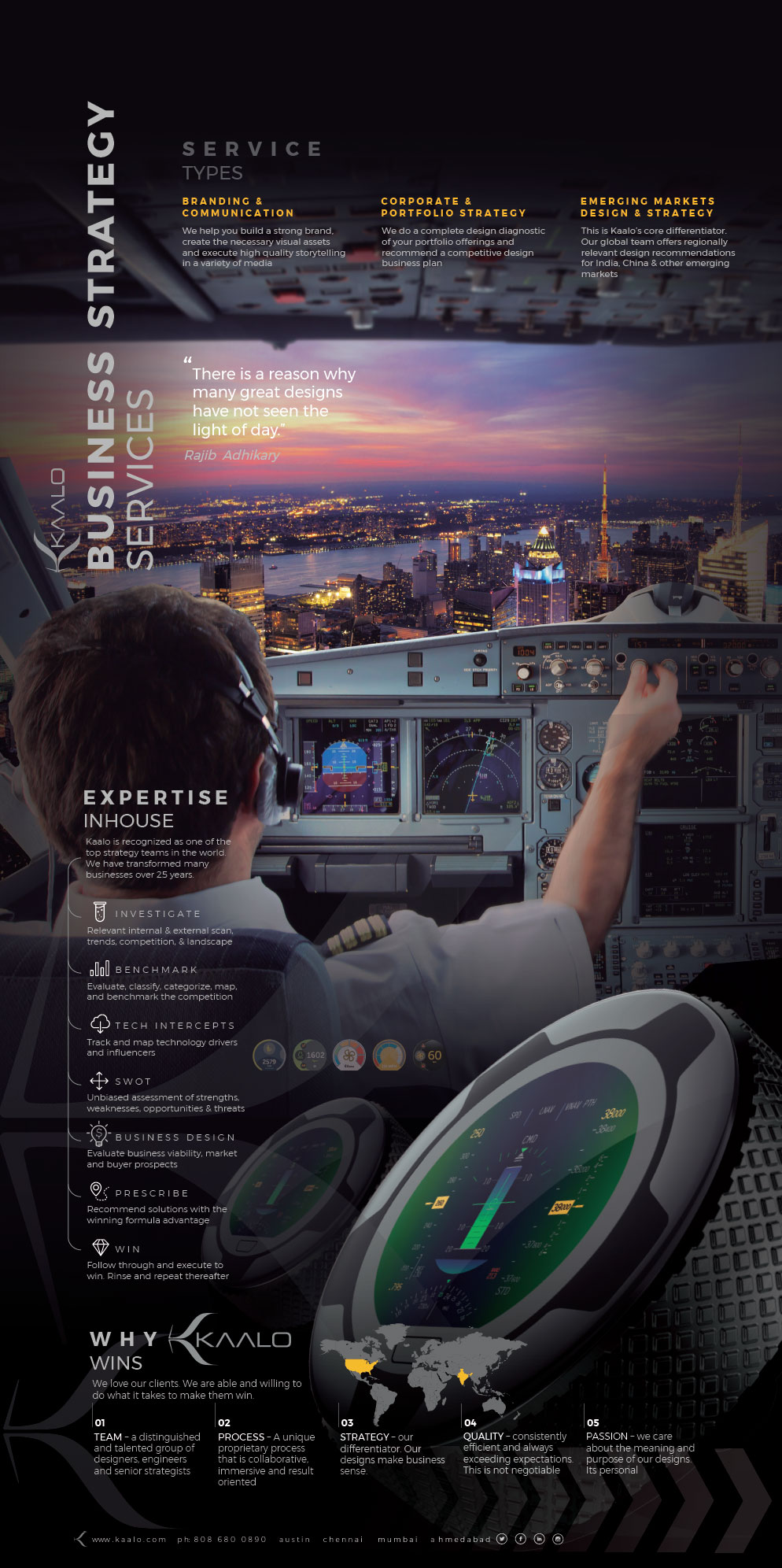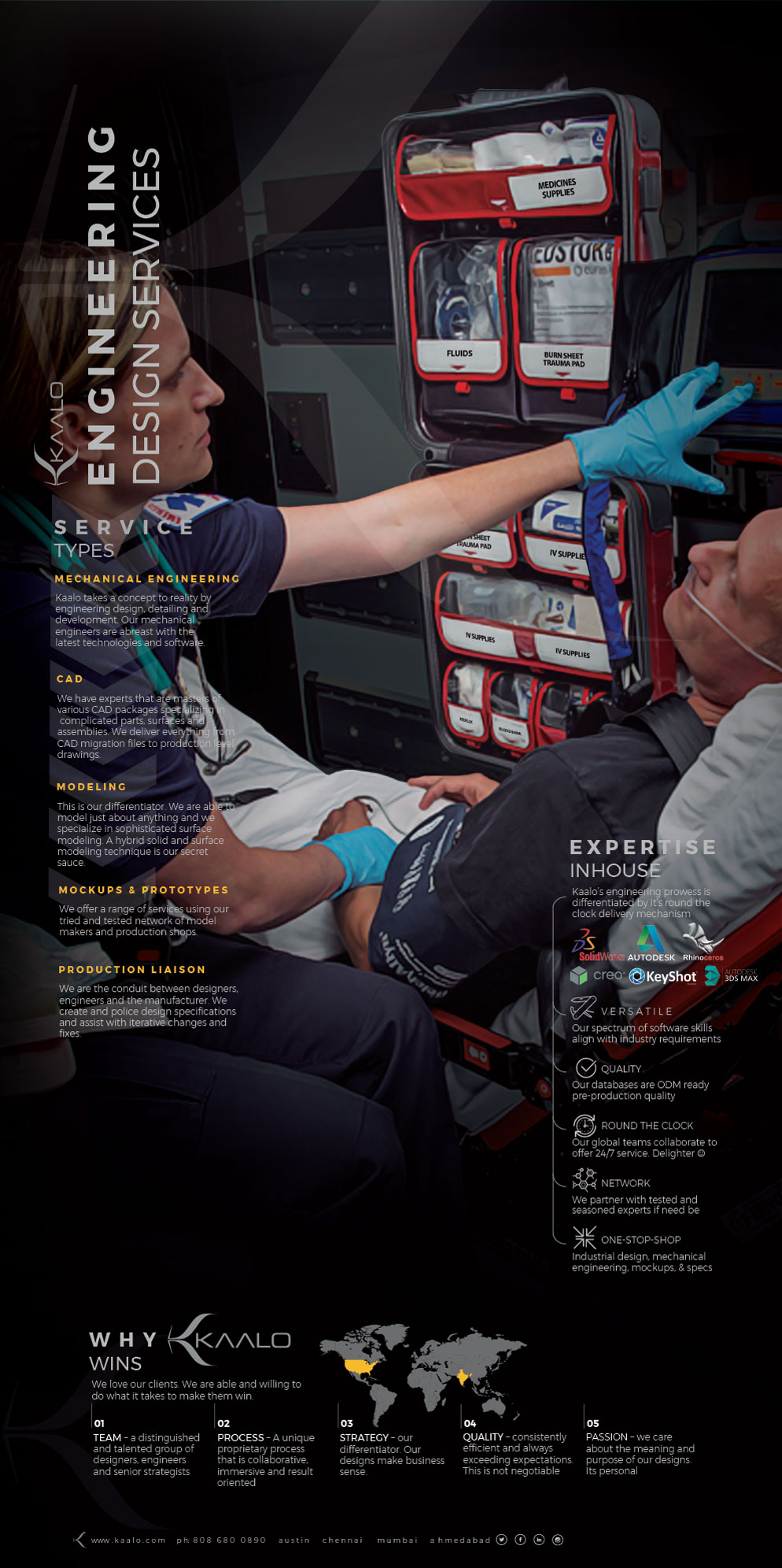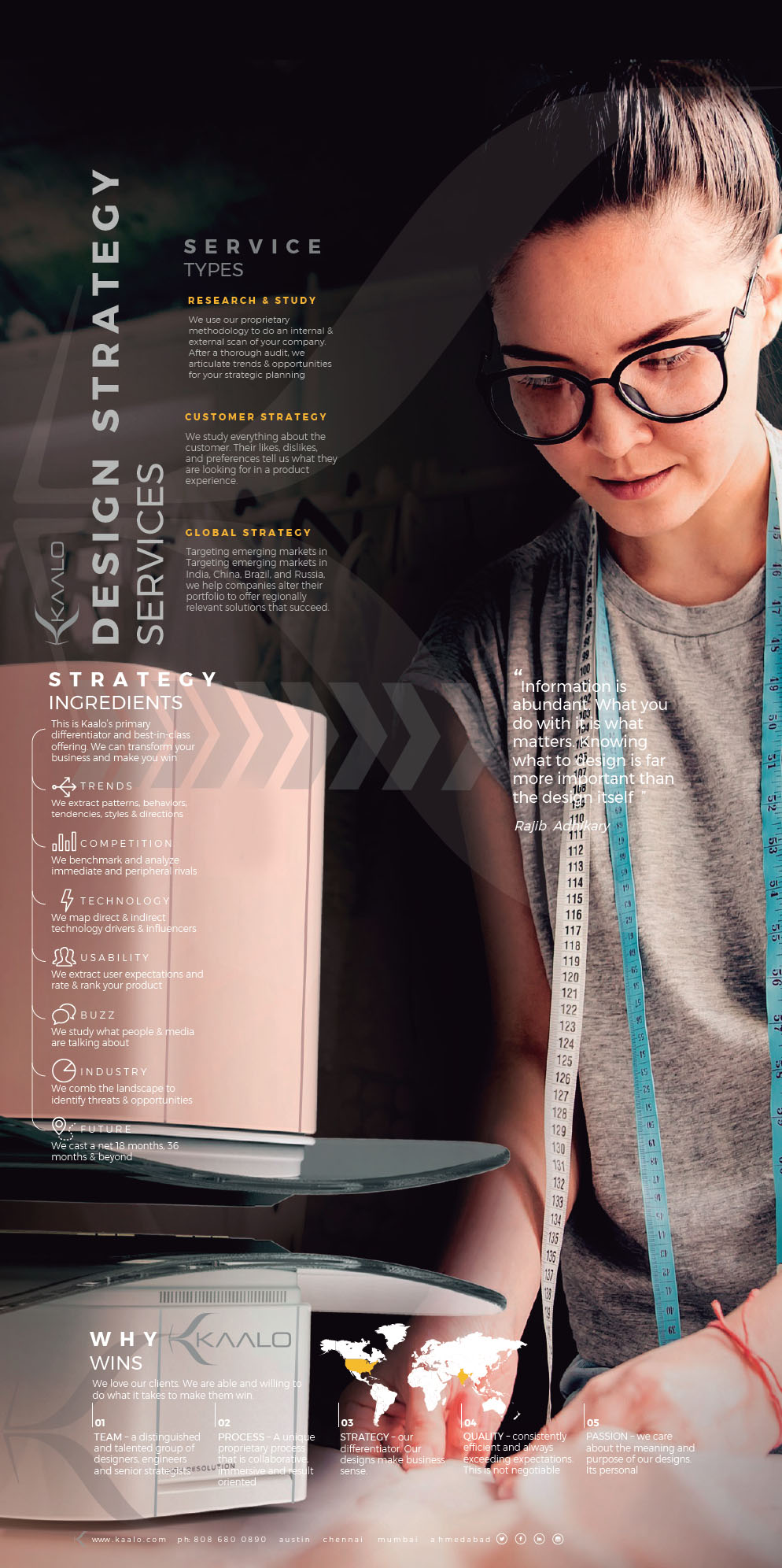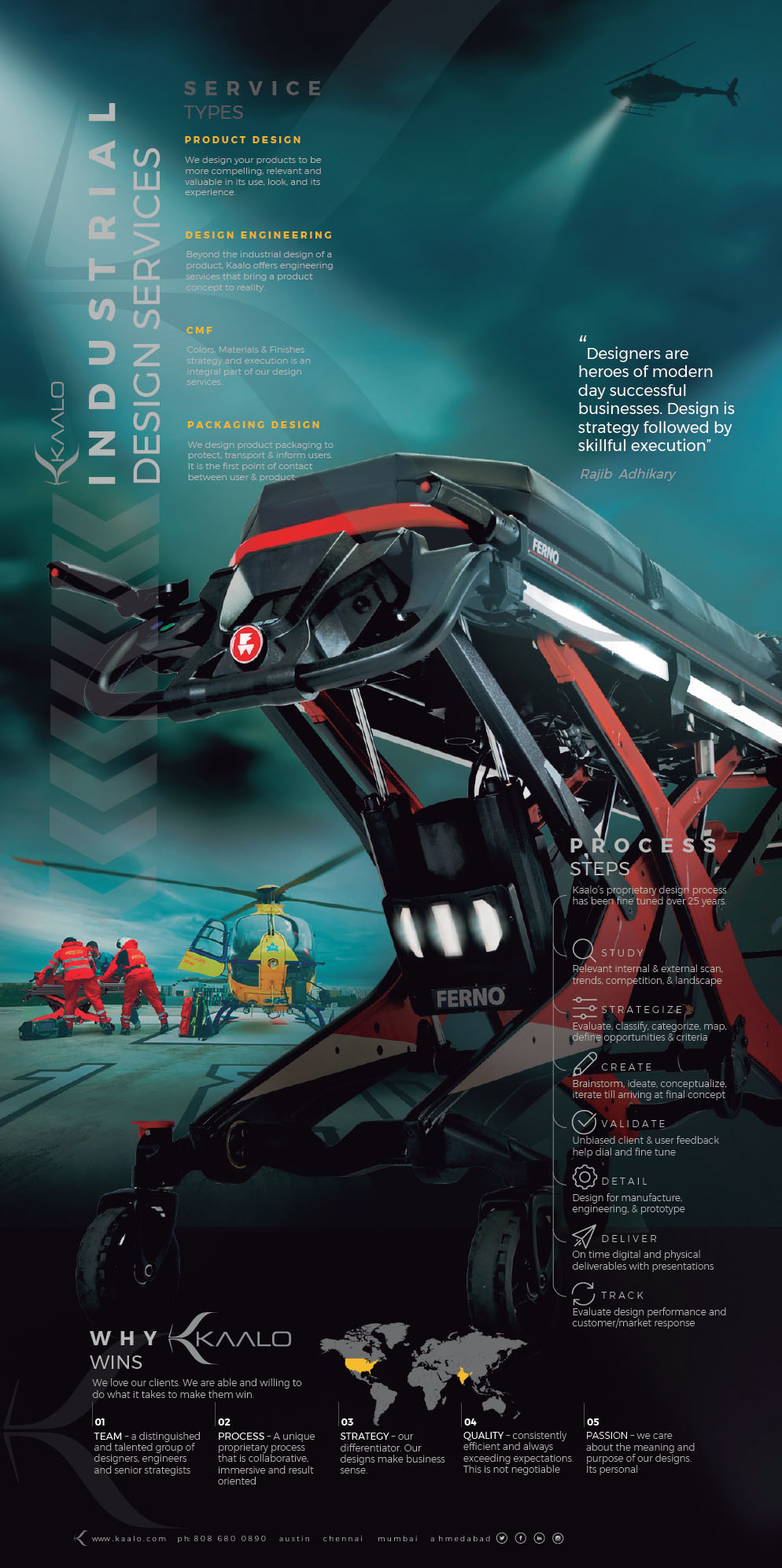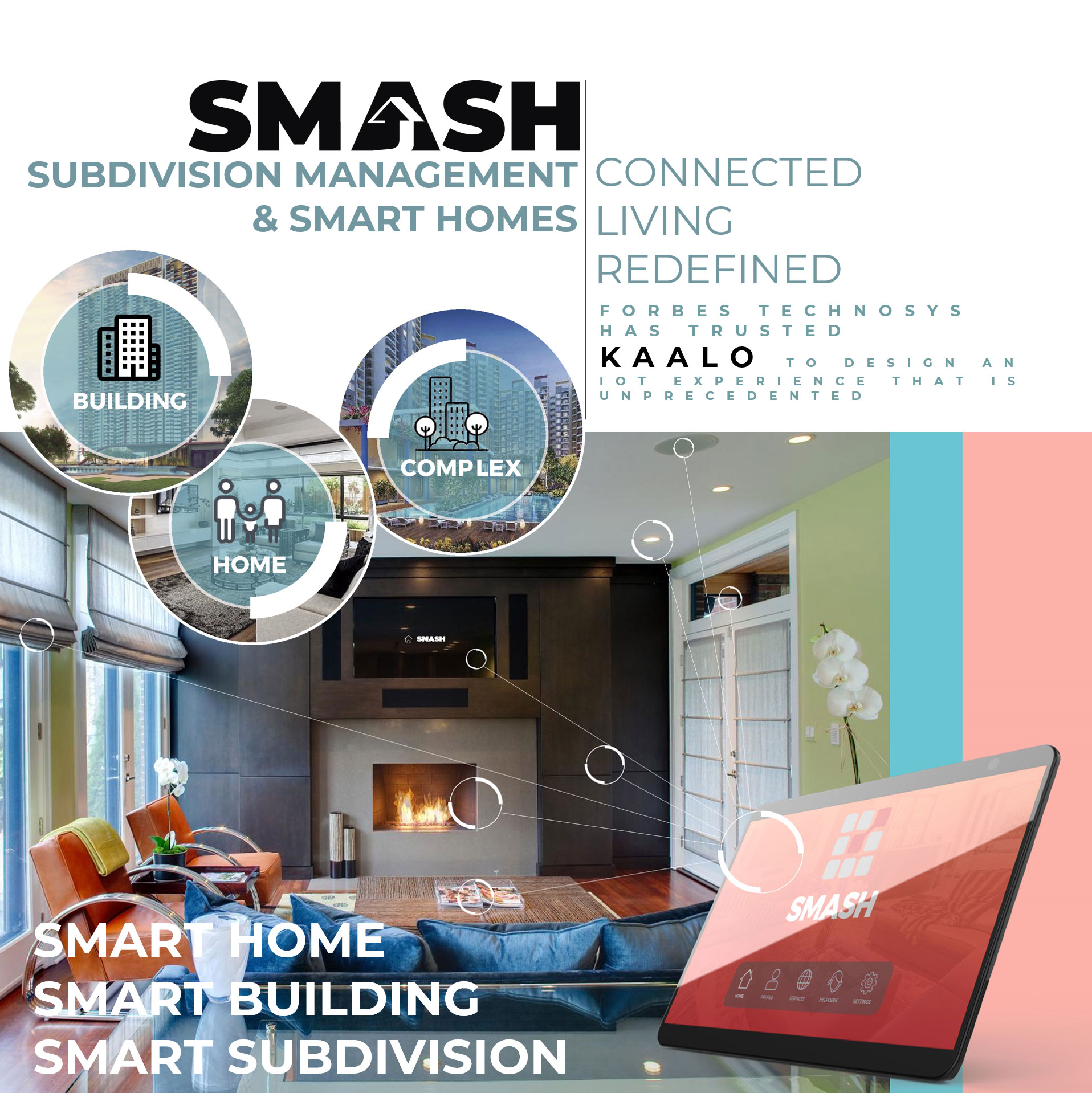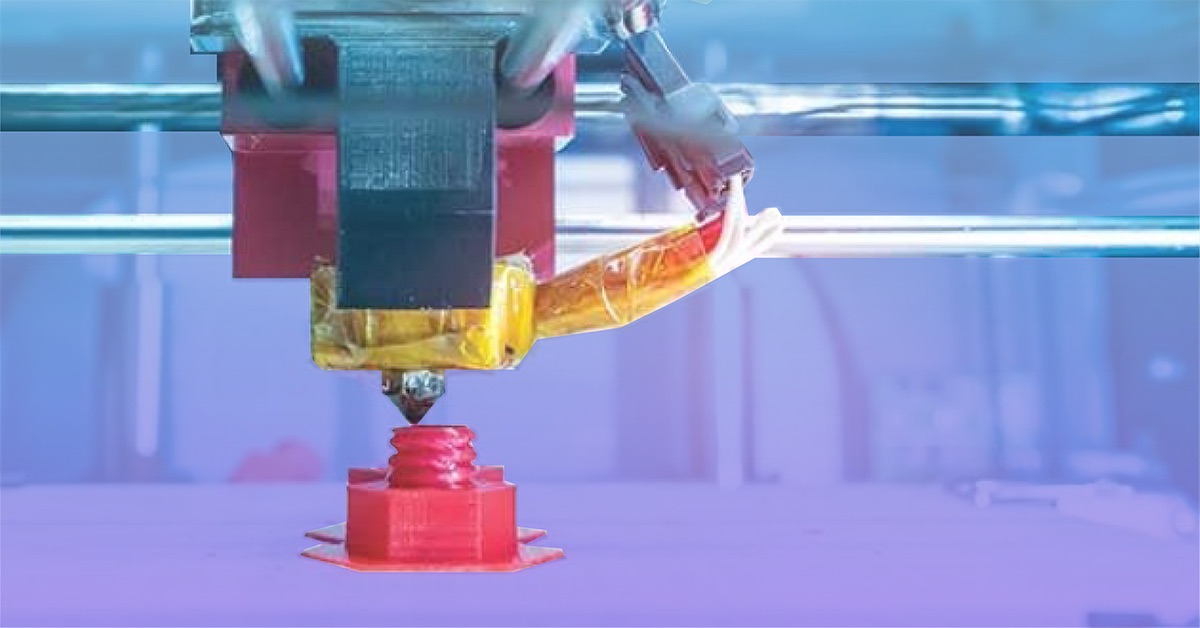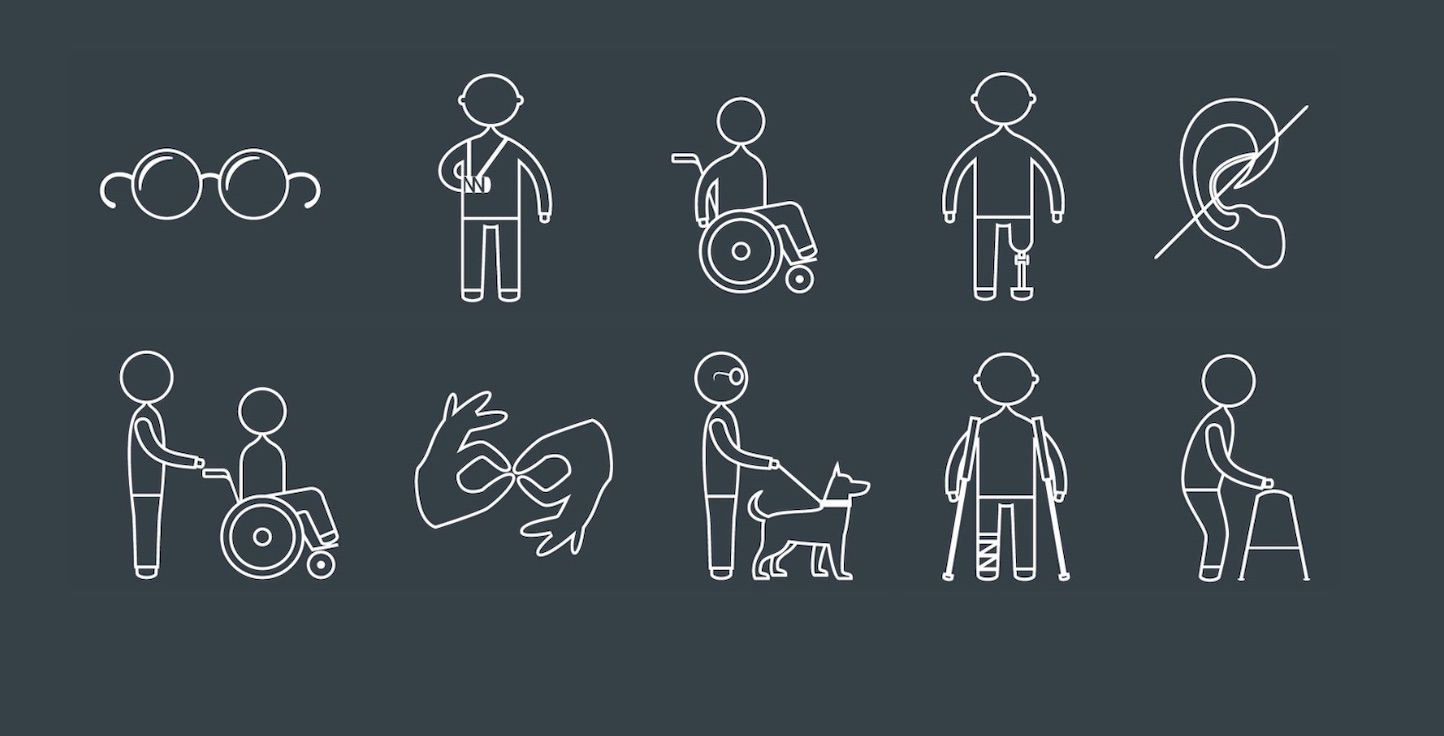Meaning in our Lives as Designers
Kaalo is more than a design firm; we have three categories of business: DESIGN, MANUFACTURING and INVESTMENT. All three are design-centric at their cores. Beyond our primary design services, we vertically integrate design into building and selling products, and we invest in design-related businesses globally. https://kaalo.com//kaalo-services/
